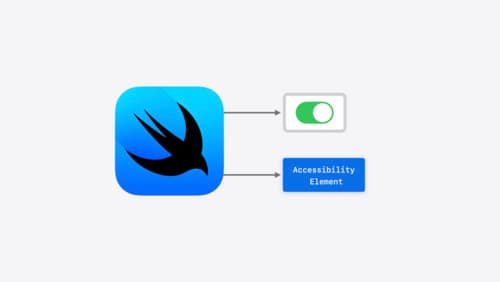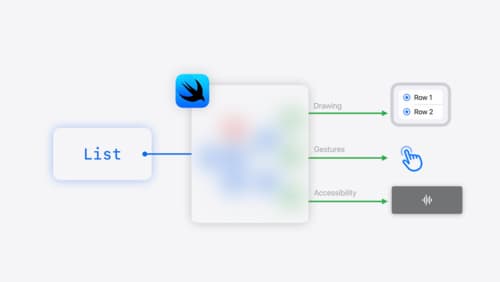Swift ui
Asked on 2024-07-28
8 searches
SwiftUI is a powerful framework for building user interfaces across all Apple platforms. Here are some key points about SwiftUI from the WWDC sessions:
-
Declarative Syntax: SwiftUI uses a declarative syntax, meaning you describe what you want the UI to look like, and SwiftUI takes care of rendering it. This approach simplifies the code and makes it more readable. For example, you can create text, images, and controls like buttons using simple, declarative code. (SwiftUI essentials)
-
Compositional and State-Driven: SwiftUI views are compositional, allowing you to build complex interfaces by combining simpler views. They are also state-driven, meaning the UI automatically updates when the underlying state changes. This reduces boilerplate code and helps prevent bugs. (SwiftUI essentials)
-
Built-in Capabilities: SwiftUI provides a wide range of built-in views and modifiers, such as buttons, toggles, pickers, navigation views, split views, and customizable multicolumn tables. It also supports presentations like sheets and inspectors. These built-in components are highly adaptive and customizable. (SwiftUI essentials)
-
Interoperability: SwiftUI can be incrementally adopted in existing apps that use UIKit or AppKit. This means you can integrate SwiftUI views into your current app without needing to rewrite everything. SwiftUI also works well with other frameworks like Swift Data and Swift Charts. (SwiftUI essentials)
-
Accessibility: SwiftUI makes it easy to create accessible apps. It automatically generates accessibility elements, which are used by technologies like VoiceOver and Switch Control to interact with your app. This ensures that your app is usable by a wider audience. (Catch up on accessibility in SwiftUI)
-
Adaptivity: SwiftUI views are designed to be adaptive, meaning they can automatically adjust to different environments, such as dark mode, dynamic type, and localization. This makes it easier to create apps that look great and work well in various contexts. (SwiftUI essentials)
-
Advanced Customization: For more advanced use cases, SwiftUI provides low-level APIs that allow you to create custom control styles, use canvas for high-performance drawing, and even apply custom Metal shaders directly to SwiftUI views. (SwiftUI essentials)
Relevant Sessions
- SwiftUI essentials
- Catch up on accessibility in SwiftUI
- Platforms State of the Union
- What’s new in AppKit
These sessions provide a comprehensive overview of SwiftUI's capabilities and how to leverage them to build great apps.

Get started with HealthKit in visionOS
Discover how to use HealthKit to create experiences that take full advantage of the spatial canvas. Learn the capabilities of HealthKit on the platform, find out how to bring an existing iPadOS app to visionOS, and explore the special considerations governing HealthKit during a Guest User session. You’ll also learn ways to use SwiftUI, Swift Charts, and Swift concurrency to craft innovative experiences with HealthKit.

Catch up on accessibility in SwiftUI
SwiftUI makes it easy to build amazing experiences that are accessible to everyone. We’ll discover how assistive technologies understand and navigate your app through the rich accessibility elements provided by SwiftUI. We’ll also discuss how you can further customize these experiences by providing more information about your app’s content and interactions by using accessibility modifiers.

SwiftUI essentials
Join us on a tour of SwiftUI, Apple’s declarative user interface framework. Learn essential concepts for building apps in SwiftUI, like views, state variables, and layout. Discover the breadth of APIs for building fully featured experiences and crafting unique custom components. Whether you’re brand new to SwiftUI or an experienced developer, you’ll learn how to take advantage of what SwiftUI has to offer when building great apps.
